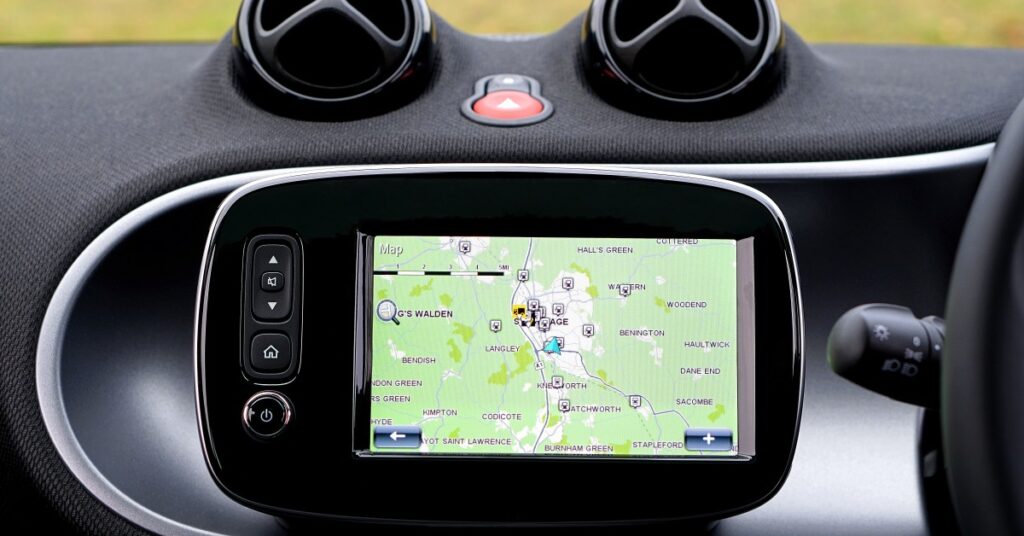
Types of Funding for Startups
Did you know that the governments provide significant funding for [...]

This website may earn a commission if you make a purchase after clicking on a product link in this article
Have trouble remembering to get your oil changed on time? A connected car can remind you–and do much more besides. It can track performance and notify you—and your dealership, if you choose—when repairs are necessary. It can enable your phone to preheat your car on cold days or honk the horn to help you find it in a parking lot. And it can create a geo-fence to locate your car and alert you when it travels outside a fixed boundary.
Soon, connected cars will be able to provide wifi service to passengers, park and retrieve themselves, and contact emergency services in case of an accident. These advances owe their existence to advances in semiconductor chips, 5G wireless networks, and, last but not least, the Internet of Things (IoT).
What is the Internet of Things? This article explores that question and also discusses:
Billions of devices make up the Internet of Things—connected cars, smart watches, smart thermostats, traffic-management systems, the list goes on. The Internet of Things is a generic-sounding name that encompasses items promoting health and fitness, home security, logistics, and product monitoring for quality assurance. As the IoT evolves, it will almost certainly take on larger, more sweeping responsibilities.
Devices connect to the internet via software, sensors, and other means, sending and receiving data. Recent estimates of devices making up the IoT range from seven billion to 18 billion. According to US News & World Report, the IoT consists of three layers:
Leading companies in the IoT world include Amazon, whose virtual assistant technology connects users to smart objects; Intel, whose semiconductor chips link IoT devices via cloud data centers and networks; and Cisco Systems, whose networking hardware gives IoT its framework.
Oracle cites several factors that have made the Internet of Things possible:
| University and Program Name | Learn More |
|
University of Washington:
Master of Science in Information Management
|
Advantages of the Internet of Things range far beyond smart cars, encompassing everything from personal convenience to reducing excessive heat in a city. Disadvantages include security concerns, equipment failure, and network overload from those billions of internet-connected devices. Here’s a look at a few pros and cons.
“Alexa, play ‘I Am Not a Robot’ by Marina.”
From the smart speaker in your kitchen to the home thermostat you can control with a smartphone from thousands of miles away, the Internet of Things has revolutionized how we interact with the world. Smart watches allow us to monitor our health and physical activity like never before. Smart electrical meters track the efficiency of our home appliances. Self-driving cars represent the tip of the iceberg for IoT machines to come. IoT gadgets promise a future that’s like Get Smart and The Jetsons all rolled into one.
All that connectivity raises inevitable security concerns. Are we sacrificing privacy for convenience? Are we giving criminals easy access to our bank accounts? Will bad guys find ways to wreck self-driving cars or shut down power grids? No system is foolproof, but engineers use high-level encryption for IoT security to reduce the likelihood of malicious hacks.
You’ve heard of smart buildings–how about smart cities? As climate change fuels record temperatures and explosive storms, the Internet of Things offers new ways for municipalities to monitor adverse conditions in their ecosystem and trigger countermeasures. For example, smart devices scattered around Mesa, Arizona, help combat heat domes, which are often accompanied and exacerbated by high particulate matter in the air. The devices transmit information about temperature and air quality, which can turn off lights and close air-intake dampers through automation.
In New Orleans, where flooding wreaks havoc from time to time, detection systems built into IoT platforms in public lighting systems can prompt warnings of high water levels and initiate drainage protocols. “In the event of an emergency created by climate events, the lighting itself can also be programmed to automatically blink or strobe to create visual notifications to the public,” said Bryan Fried, CEO and chairman of Pangea Global Technologies.
The tsunami of new devices connecting to the internet in recent years has put a strain on some systems, “overloading networks with information and slowing performance,” wrote Carsten Rhod Gregersen, CEO and founder of Nabto, a Danish company that builds P2P technology for communication to IoT devices. “As a result, homes and businesses are seeing enormous amounts of traffic coming from a wider selection of devices… Ill-prepared networks could falter under the strain.”
Another upside to all that connectivity: companies and businesses can track their materials and products like never before. Remote monitoring, or “ring fencing,” can watch high-value assets and help prevent them from being removed or stolen. Companies can monitor equipment from a distance, receive notifications of problems in a timely manner, and implement predictive maintenance.
Manufacturers can track the performance of their products in the real world. Fleet monitoring allows companies to direct their vehicles in real time, optimizing efficiency. Supply chain management uses the IoT to keep supplies on hand and shelves stocked.
Is your smart home too smart for its own good? Have bells and whistles overwhelmed functionality? Sometimes you just want to turn on a lamp or wash a load of clothes. If a device is too complex and internet-dependent, technical glitches or connectivity problems can make simple tasks unnecessarily difficult or impossible.
Monitoring of health indicators used to be reserved for hospital patients and astronauts, but 21st century IoT technology is counting steps and tracking the heart rates of millions of people around the world. There are wearables that allow people to track their own health and fitness as well as monitors that allow healthcare professionals to track patients remotely and companies to track employees working in hazardous situations.
Those billions of devices making up the Internet of Things need plenty of software engineers and other tech experts to keep the lines of communication open. IoT-related jobs include hardware designers, software coders, security analysts, 3-D printing engineers, systems engineers, wearable tech designers, grid modernization engineers, medical robot designers, database programmers, intermodal transport designers, network engineers, counter hackers, IoT/cloud software developers, IoT infrastructure architects, IoT systems administrators, vulnerability/cyber engineers, and test engineers.
A bachelor’s degree in computer science, computer engineering, information technology, information networking, is a prerequisite for many IoT jobs. A master’s degree can give you a competitive edge when it comes to landing your choice of jobs and maximizing your earning potential. Schools such as Case Western Reserve University and Southern Methodist University offer master’s degrees in computer science with a wide variety of specializations, including artificial intelligence and machine learning, software engineering, and cybersecurity. Both are part-time online programs, meaning you won’t have to relocate to enroll and you can continue working while you earn your degree.
Questions or feedback? Email editor@noodle.com

Did you know that the governments provide significant funding for [...]

Cyber security architects can earn over $200,000 annually in salary, [...]

The term information technology covers a wide swath of computing [...]

Cybercrime investigators are highly knowledgeable professionals applying an ever-changing arsenal [...]

Machine learning, a subfield of artificial intelligence, uses algorithms that [...]
Categorized as: Engineering, Information Technology, Information Technology & Engineering